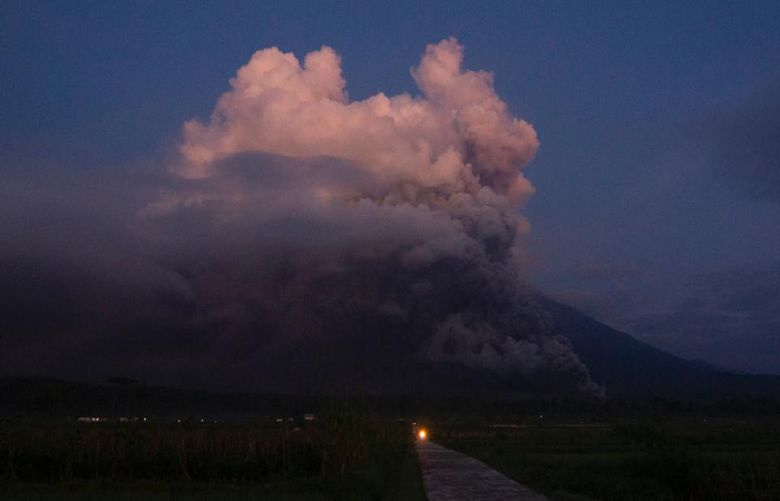Indonesia’s highest volcano on its most densely populated island released searing gas clouds and rivers of lava in its latest eruption.
According to international media reports monsoon rains eroded and finally collapsed the lava dome atop 3,676-metre (12,060-foot) Mount Semeru in east Java on Sunday, causing the eruption, according to National Disaster Management Agency spokesperson Abdul Muhari, citing information from the Vulcanology and Geological Hazard Mitigation Agency (PVMBG) at the Energy and Mineral Resources Ministry.
Authorities raised the threat level from III to IV, the highest level, which "means the danger has threatened the people's settlement and the volcano's activity has escalated".
Several villages were blanketed with falling ash, blocking out the sun, but no casualties have been reported.
Several hundred people were moved to temporary shelters or left for other safe areas, mostly women, children and elders, said Joko Sambang who heads the disaster management agency in Lumajang, East Java province
The eruption on the eastern part of Java island, some 640 kilometres (400 miles) east of the capital Jakarta, follows a series of earthquakes on the west of the island, including one last month that killed more than 300 people.
Semeru’s last major eruption was in December last year, when the rumbling volcano erupted with fury and left 51 people dead in villages that were buried in layers of mud. Several hundred others were injured with serious burns, and the eruption forced the evacuation of more than 10,000 villagers. The government moved about 2,970 houses out of the danger zone.







